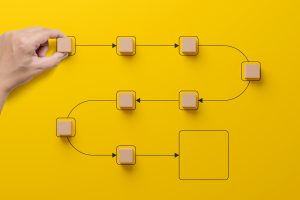Only 5% of the B2B Buying Journey Is Spent Meeting Suppliers—Make It Count

Differentiate Through Responding To Patient Needs
April 2, 2025
4 Ways Challenger Brands Compete Against Incumbents in South Africa’s FMCG Market
July 15, 2025Only 5% of the B2B Buying Journey Is Spent Meeting Suppliers—Make It Count
The Invisible Advantage: Communicating The Intangible Value of Your B2B Services
Only 5% of the B2B Buying Journey Is Spent Meeting Suppliers—Make It Count
If you were an army general, would you ever enter a major battle without studying the battlefield, your opponent, or your army’s strength? Probably not. Similarly, a structured approach to buyer enablement ensures that every potential client is adequately nurtured and guided through the purchase journey. Without this tactical preparation, crucial opportunities are lost, like leaving a gap in your forces where you become weak and exposed to defeat.

South Africa’s engineering consulting and construction sector is a critical pillar of the economy—closely tied to infrastructure investment, energy development, and public sector projects. The industry has faced volatility in recent years due to economic pressures, political uncertainty, and underinvestment in public works.

How The B2B Buying Process Impacts Your Sales


B2B clients in the engineering space—whether from government, private developers, or other firms—follow a relatively structured procurement process. However, within that structure, nuanced buyer behaviour plays a critical role in the decision-making process.
Broadly speaking, the hiring of a consultant on a project can be broken down into two main aspects of search and selection. Various issues can trigger the search process, which goes through the typical stages of recognising the problem, identifying possible consultants, evaluating and selecting the consultant.
Only 17% of the time is spent on meeting potential suppliers when considering a purchase, according to research by Gartner; this time can be as low as 5% when multiple providers are considered. The problem is in part due to the complexity of the purchase and level of potential risk, which means there can be up to ten participants in the process.
Tailor Your Message For Every Role In The Buying Process

Build Your Influence Before You Even Enter The Room

Unsurprisingly, buyers of consulting services tend to use both objective and subjective measures during selection. Respondents to a 2020 study revealed that some purchases have a champion who advocates for their implementation. This can be the result of positive past experience or credible recommendation through personal sources that impact subjective impressions.
Biases That Can Triple Your Chances of B2B Success

Our modern information-rich existence, powered by the rise of the internet that puts almost everything a click away, also means clients can get easily overwhelmed by information during the purchase journey.
As many as 77% of respondents in a Gartner survey described their purchase as difficult and very complex, making it vital to increase the ease of this process for them.
Buyer enablement is the process of ensuring clients receive the information that advances them through their purchase journey tasks.

Buyer enablement information is often shareable, aligns with emotional needs in a way that leads back to your unique differentiator.
The survey also found that suppliers seen as helpful in advancing the journey were 3 times more likely to make a bigger purchase with less regret. Providing clients with information that’s credible and relevant to the role and purchase journey tasks drives ease of purchase and generation of high-quality leads. While technical capability is the minimum threshold, the final decision is frequently driven by trust, clarity, and perceived ease of working together.
What Makes A Resilient B2B Service Offering
Ease of Access

Research suggests buyers favour vendors whose staff are easily available for help when required, while making purchase decisions. They articulate clearly what differentiates them—be it a specialist focus, faster turnaround, or in-depth knowledge and do so in a way that is easily accessible to the decision makers.
Operational Reliability

They have repeatable, documented processes that enable consistent delivery, even in uncertain project environments.
Credibility

They show transparency in cost, process, and outcomes; they provide documentation, case studies, and references up front.
Strong Communication Culture

They prioritise client alignment through regular updates, clear deliverables, and responsiveness are key to navigating multi-stakeholder projects.
Strategic Flexibility

They adapt offerings based on market conditions—e.g., offering modular engineering packages or expanding advisory capabilities in key industry areas.
Beyond Technical Skills
Sun Tzu’s timeless insight, from earlier in this article, is like having a detailed map of a challenging battlefield—one where every hill, valley, and enemy position is clearly marked. In the competitive landscape, this means understanding both the external market conditions and your internal strengths.

Sources and references:
- Gartner (2019). How to adapt your sales and marketing strategies to the current state of B2B buying. Retrieved from:
- CESA (2024) BI-ANNUAL ECONOMIC AND CAPACITY SURVEY
- P N Okonkwo, J Wium (2019) Impact of discounted professional fees on the risk exposure of civil and structural engineering services consultants in South Africa. Retrieved from
- Dubravka S Ć (2021)Factors Influencing Organisational Buying Decisions in the Manufacturing Industry: Are Products and Services Procurement Different?. Retrieved from
- Arbnor B & Fredrik C (2011) A study of the industrial buying behaviour in Life Science organizations when faced with a radical innovation. Retrieved from
- A. R. Chitra,B. Neeraja,KannigaPrashanth (2019) Technical Considerations Influencing Purchase Decisions in the B2B Environment. Retrieved from




